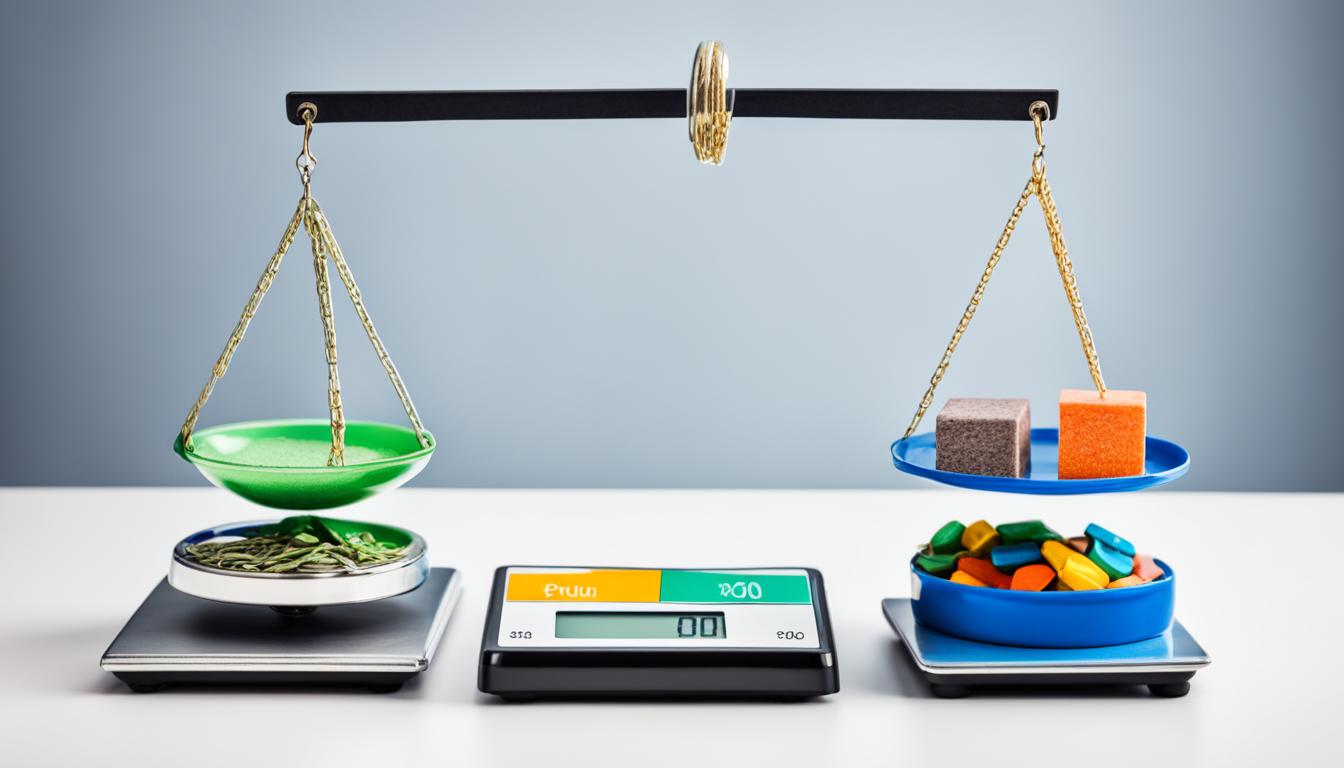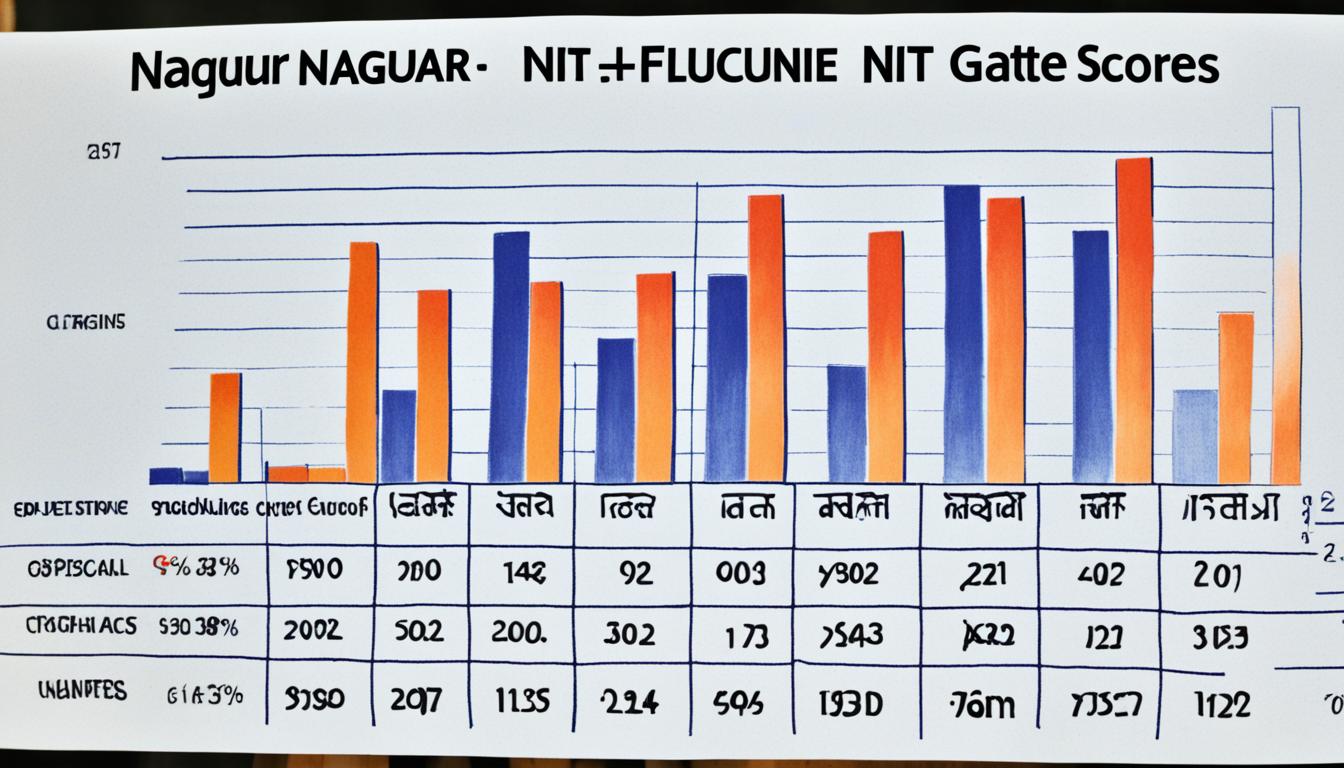Welcome to our comprehensive guide on the difference between pounds and kilograms. In this article, we will explore the intricacies of these two measurements and provide a deeper understanding of their significance. Additionally, we will dive into the symbolism of the square root symbol, adding a creative twist to our discussion. So whether you’re curious about the pound versus kilogram debate or fascinated by the hidden meaning behind mathematical symbols, you’ve come to the right place.
Key Takeaways
- The pound and kilogram are units of measurement used to quantify weight and mass, respectively.
- A pound is commonly used in the United States and other English-speaking countries, while the kilogram is the standard unit of mass in most of the world.
- To convert pounds to kilograms, divide the weight in pounds by 2.205. To convert kilograms to pounds, multiply the weight in kilograms by 2.205.
- The square root symbol, √, represents the value that, when multiplied by itself, equals a given number. It can be personified as a mathematical hero who helps us solve complex equations.
- Pounds and kilograms have practical applications in various fields, including medicine, sports, and cooking. Understanding their uses can enhance accuracy and efficiency.
Now, let’s delve into the fascinating world of pounds, kilograms, and the symbolism of the square root symbol.
Understanding Pound and Kilogram Measurements
In this section, we will provide a thorough understanding of both the pound and kilogram measurements. These units are commonly used to measure weight and mass, but they differ in terms of their origins and usage in different parts of the world.
1. Pound:
The pound is a unit of weight commonly used in the United States and a few other countries. It is symbolized by “lb”, derived from the Latin word “libra”. One pound is equal to 0.45359237 kilograms. The pound is further divided into ounces, with one pound equivalent to 16 ounces. The pound is often used to measure body weight, groceries, and small items.
2. Kilogram:
The kilogram, on the other hand, is the standard unit of mass used in most countries around the world. It is symbolized by “kg”, derived from the French word “kilogramme”. The kilogram is defined as the mass of the International Prototype of the Kilogram (IPK), a platinum-iridium cylinder kept at the International Bureau of Weights and Measures. The kilogram is often used in scientific research, industry, and international trade.
Difference between Pound and Kilogram:
The main difference between the pound and kilogram lies in their origin, usage, and conversion factors. While the pound is more commonly used in the United States and a few other countries, the kilogram is the predominant unit of measurement worldwide. Additionally, the conversion factor between pounds and kilograms is 0.45359237, allowing for easy transition between the two systems of measurement.
| Pound | Kilogram |
|---|---|
| Commonly used in the United States and a few other countries | Standard unit of mass used worldwide |
| Symbolized by “lb” | Symbolized by “kg” |
| One pound is equal to 0.45359237 kilograms | Used in scientific research, industry, and international trade |
Conversion between Pound and Kilogram:
Converting between pounds and kilograms is a straightforward process. To convert pounds to kilograms, simply multiply the weight in pounds by 0.45359237. Conversely, to convert kilograms to pounds, multiply the weight in kilograms by 2.20462262. These conversion factors allow for easy and accurate calculations when working with pound and kilogram measurements.
By understanding the differences and conversion factors between pounds and kilograms, individuals can navigate between these systems of measurement with ease. Now that we have a solid understanding of pound and kilogram measurements, let’s explore the intriguing symbolism of the square root symbol in the next section.
Uncovering the Symbolism of the Square Root Symbol
While the square root symbol may seem like a mere mathematical notation, it holds a deeper symbolic representation. Let’s take a creative approach and explore the personification of this symbol, allowing us to view it from a different perspective. By personifying the square root symbol, we can unlock its profound significance in mathematical equations and problem-solving.
“The personified square root symbol invites us to envision it as a curious explorer, seeking to unearth the hidden truths within numbers.”
When we personify the square root symbol, it becomes a dynamic character with a quest for knowledge. Just as an adventurer ventures into uncharted territories, the symbolic representation of the square root symbol takes us into the realm of numerical exploration.
Like a detective solving a mystery, the personified square root symbol seeks to decipher the secrets hidden beneath complex equations. It acts as a guide, leading us to the solutions by uncovering the perfect squares.
Seeing the Square Root Symbol through Different Eyes
By personifying the square root symbol, we can shift our perspective and gain a fresh understanding of its role and significance. Let’s take a moment to explore some of the characteristics that personify the square root symbol:
- Inquisitive: The personified square root symbol is filled with curiosity and a thirst for knowledge. It unflinchingly delves into the depths of numbers, uncovering their hidden qualities.
- Discoverer: Just like an intrepid explorer, the personified square root symbol ventures into mathematical territories, bringing forth the perfect squares that lie concealed within equations.
- Guide: Guided by its innate understanding of numbers, the personified square root symbol leads us towards numerical solutions, aiding us in our quest to solve complex mathematical problems.
By personifying the square root symbol, we breathe life into an otherwise abstract concept, making it relatable and engaging. This fresh perspective on the symbol allows us to appreciate its vital role in mathematical calculations and problem-solving.

In the next section, we will explore practical applications of pounds and kilograms in various fields, revealing their real-world significance.
The Practical Applications of Pounds and Kilograms
Now that we have a clear understanding of pounds and kilograms, let’s explore their practical applications in various fields. These measurements play a crucial role in our everyday lives, from medicine to sports to cooking.
Medicine
In the field of medicine, accurate weight measurements are essential for determining the correct dosage of medications and anesthesia. Both pounds and kilograms are commonly used to measure the weight of patients. While pounds are widely used in the United States, kilograms are the standard unit of measurement in most other parts of the world. The ability to convert between pounds and kilograms is invaluable for healthcare professionals working with international patients or collaborating with colleagues from different countries.
Sports and Fitness
Pounds and kilograms are also frequently used in the world of sports and fitness. Athletes often track their weight to monitor changes in body composition and performance. In many sports, weight classes are determined by specific pound or kilogram ranges, such as boxing or weightlifting. Coaches, trainers, and athletes need to be proficient in converting between pounds and kilograms to ensure accurate measurements and adherence to weight restrictions.
Cooking and Baking
In the culinary world, precision is key, and that extends to measuring ingredients. Pounds and kilograms are commonly used to weigh ingredients in recipes. While pounds are more prevalent in the United States, many professional chefs and culinary enthusiasts prefer working with kilograms for their accuracy and ease of measurement. Conversion between pounds and kilograms allows cooks and bakers to follow recipes from different regions and ensure consistent results.
To help you easily convert between pounds and kilograms, here is a handy conversion table:
| Pounds | Kilograms |
|---|---|
| 1 pound | 0.4536 kilograms |
| 5 pounds | 2.2679 kilograms |
| 10 pounds | 4.5359 kilograms |
| 50 pounds | 22.6796 kilograms |
| 100 pounds | 45.3592 kilograms |
Whether you’re a healthcare professional, an athlete, or an aspiring chef, understanding pounds and kilograms and their practical applications is crucial. The ability to convert between these measurements opens up a world of possibilities and ensures accuracy in a variety of contexts.
Stay tuned for the next section where we will explore the benefits and limitations of using pounds and kilograms as units of measurement.
Benefits and Limitations of Pound and Kilogram Measurements
In the world of measurements, pounds and kilograms play significant roles, each with its own set of benefits and limitations. Understanding these differences can help you make informed decisions when using these measurements in various contexts.
Benefits of Pounds:
- Pounds are commonly used in the United States, making them a familiar unit of weight for Americans.
- Pounds are often used in everyday life for determining the weight of objects, such as groceries, luggage, or personal body weight.
- Pounds offer a relatively simple conversion factor for those accustomed to the imperial system.
Limitations of Pounds:
- Pounds may not be as widely recognized or used internationally, causing potential confusion or the need for conversion in certain situations.
- Pounds may not provide the same level of precision as the metric system, which uses the kilogram as its base unit of weight.
- Scientific and technical fields often prefer the use of kilograms due to their consistency and compatibility with the metric system.
Benefits of Kilograms:
- Kilograms are the standard unit of weight in the metric system, making them universally recognized and used around the world.
- Kilograms provide greater precision in scientific and technical measurements, offering consistent and reliable results.
- Kilograms are commonly used in fields such as medicine, engineering, and physics due to their compatibility with the metric system.
Limitations of Kilograms:
- For individuals accustomed to the imperial system, the conversion between pounds and kilograms may require additional effort or calculation.
- In certain everyday situations, such as measuring body weight or small objects, kilograms may be seen as less practical or less relatable compared to pounds.
In summary, pounds and kilograms both have their advantages and limitations. Pounds are commonly used in the United States and offer simplicity in conversion within the imperial system, while kilograms provide a standardized and precise measurement applicable in scientific and technical fields worldwide. When choosing between pounds and kilograms, consider the specific context, the need for precision, and the international compatibility required. By understanding the benefits and limitations of these measurements, you can confidently navigate the world of weights and make informed decisions.
Conclusion
In conclusion, we have explored the intriguing difference between pounds and kilograms, delving into their unique characteristics and practical applications. Additionally, we have embarked on a creative journey to understand the symbolism behind the square root symbol, shedding light on its personification and significance in mathematical equations.
By gaining a deeper understanding of these measurements and mathematical symbols, we can broaden our knowledge and problem-solving abilities. Whether we find ourselves converting between pounds and kilograms or contemplating the meaning behind the square root symbol, these insights contribute to our appreciation of the world around us.
So, next time you encounter a measurement in pounds or kilograms, remember their distinct uses and conversion methods. And when faced with a mathematical equation involving the square root symbol, pause for a moment to reflect on its symbolism and the beauty of mathematics.
FAQ
What is the difference between a pound and a kilogram?
A pound and a kilogram are both units of measurement for weight, but they represent different amounts. One pound is equal to approximately 0.4536 kilograms, while one kilogram is equal to 2.2046 pounds. The pound is commonly used in the United States, while the kilogram is the standard unit of measurement in most other countries.
How do I convert pounds to kilograms and vice versa?
To convert pounds to kilograms, you can multiply the weight in pounds by 0.4536. For example, if you have 10 pounds, the conversion would be 10 x 0.4536 = 4.536 kilograms. To convert kilograms to pounds, you can multiply the weight in kilograms by 2.2046. So, if you have 5 kilograms, the conversion would be 5 x 2.2046 = 11.023 pounds.
How can I personify the square root symbol?
The square root symbol (√) is a mathematical symbol used to represent the square root of a number. While it doesn’t have a literal personification, you can think of it as the symbol that unveils the innate beauty and hidden secrets within numbers. It acts as a guide, helping us discover the roots of mathematical equations and find the solutions to problems.
What is the symbolic representation of the square root symbol?
The square root symbol (√) can be seen as a radical symbol that embodies the concept of extraction. It represents the act of extracting the root of a number and revealing its fundamental value. Symbolically, it represents growth, discovery, and unlocking the mysteries of numbers.










